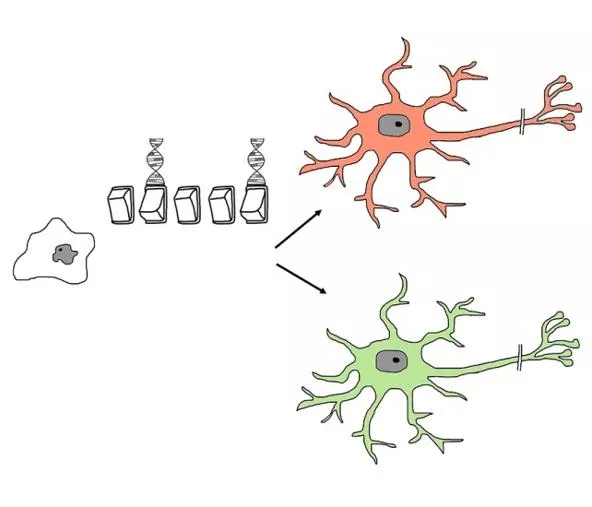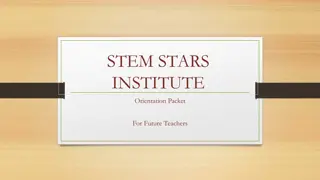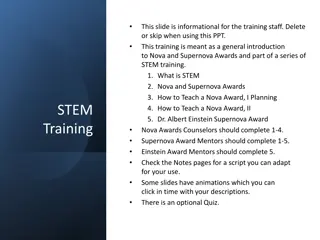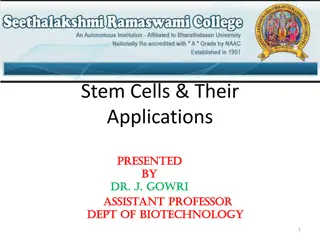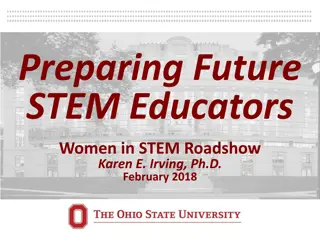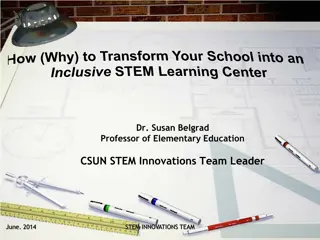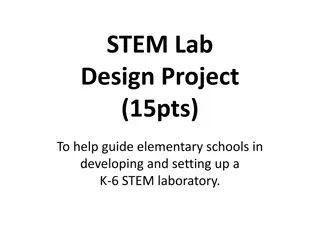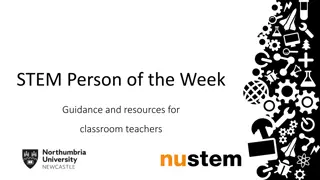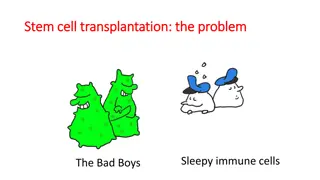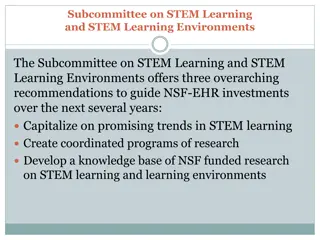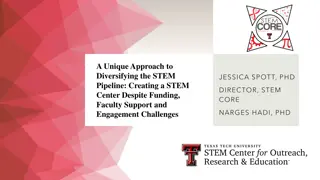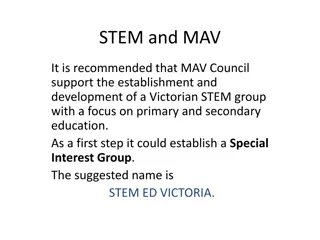Understanding Stem Cells and Their Applications
Stem cells are unique cells that have the potential to develop into various types of cells in the body. They play a crucial role in renewing and repairing tissues, offering hope for treating various medical conditions. While adult stem cells can differentiate into limited cell types, embryonic stem cells have the capacity to become diverse cell types. The use of stem cells, especially embryonic ones, raises ethical concerns, but their potential in treating diseases and regenerating damaged tissues is significant.
Download Presentation

Please find below an Image/Link to download the presentation.
The content on the website is provided AS IS for your information and personal use only. It may not be sold, licensed, or shared on other websites without obtaining consent from the author. Download presentation by click this link. If you encounter any issues during the download, it is possible that the publisher has removed the file from their server.
E N D
Presentation Transcript
Stem Cells Do now activity: 1. What do you know about stem cells and the uses of these special types of cells? 1. Why might the use of embryonic stem cells be a controversial issue?
Progress indicators GOOD PROGRESS: To define the term stem cell and state how stem cells are different to other cells OUTSTANDING PROGRESS: To describe the function of stem cells in embryos, adult animals and plants and in treating medical conditions
Stem Cells During the development of an embryo, most of the cells become specialised. They cannot later change to become a different type of cell. But embryos contain a special type of cell called stem cells. These can grow into any type of cell found in the body. They are unspecialised cells.
Task: Whilst watching the video answer the following questions in your book: 1. What are some of the uses of stem cells? 2. What s a difference between adult stem cells and embryonic stem cells? 3. How are stem cells currently being used to treat medical conditions? 4. Describe how therapeutic cloning can be used and the social and ethical concerns with this procedure 5. What are meristems? https://www.youtube.com/watch?v=9db44fBrWrE
Self-assessment: 1. Repair damaged organs, bones and cartilage and help to treat certain medical conditions. 2. An embryonic stem cell has the ability to differentiate into a wide variety of cell types whereas an adult stem cell can only differentiate into a few cell types. 3. In 2016 stem cells have been used in multiple sclerosis sufferers in order for them to regain mobility. The most widely used stem cell treatments are for people with conditions of the blood. 4. Therapeutic cloning involves growing an embryo using cloned cells from a human, the embryonic stem cells are removed and used to grow organs/tissues which can then be replaced in that human. Concerns regarding when life begins and whether we are playing God . 5. Meristems are areas of the plant where unspecialised cells group together, this is where the majority of growth takes place.
What are stem cells? Stem cells are _______A______ cells. They retain the ability to ____B_____ throughout life and give rise to cells that can become highly ____C____ and take the place of cells that __D___or are lost. Stem cells allow the body to renew and __E____ its tissues. Unlike ____F___ cells, which are permanently committed to their fate, stem cells can both renew themselves and create __G__ cells of whatever tissue they belong to (and other tissues). Bone marrow stem cells, for example, are the most primitive cells in the marrow. From them all the various types of __H___ cells are descended. Bone ____I____ stem cell transfusions (or transplants) were originally given to replace various types of blood cells. New Die Specialised Unspecialised Marrow Divide Repair Mature Specialised
Self-assessment: A Unspecialised B Divide C Specialised D Die E Repair F Mature G New H Specialised I - Marrow
Meristem are areas of plant tissue at which growth occurs. Cells in these tissue have the ability to divide and specialise to become one of a number of different types of cell. The cells in the meristem have the ability to divide over and over again to produce non-specialised cells. Some of these cells continue to divide, allowing the plant to grow taller and wider throughout its life. 1. What s the name of plant stem cell tissue? 2. How is it similar to adult stem cells and how is it different? Extra Challenge: Why are scientists especially interested in studying plant stem cells?
Plenary: Key Word Glossary Task: Using the list of key words below, write a key word glossary to show your word consciousness today Stem Cell Meristem Specialised Unspecialised Differentiated



